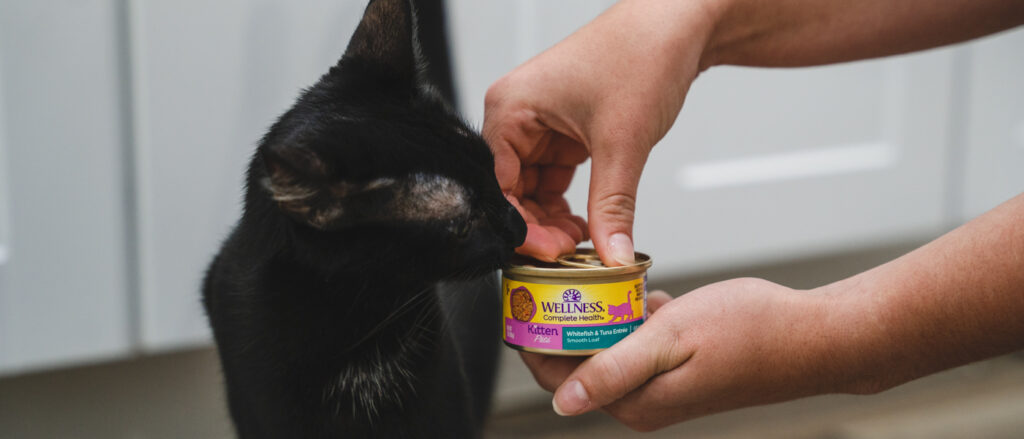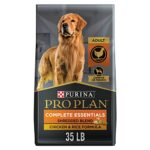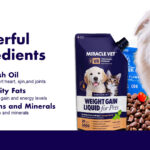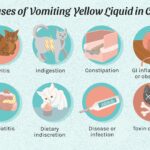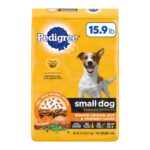How Long Can Canned Cat Food Sit Out: Safety Tips for up to 2 hours. Beyond that, it may spoil and become unsafe for pets.
Canned cat food is a convenient option for pet owners, providing a balanced diet for their feline friends. Proper storage and handling are crucial to ensure your cat’s food remains fresh and safe to eat. Leaving canned cat food out for too long can lead to bacteria growth, which poses health risks.
Always monitor the time food sits out and store leftovers properly. Refrigerating unused portions and serving smaller amounts can help maintain your cat’s health. By following these guidelines, you can ensure your cat enjoys nutritious and safe meals every day.
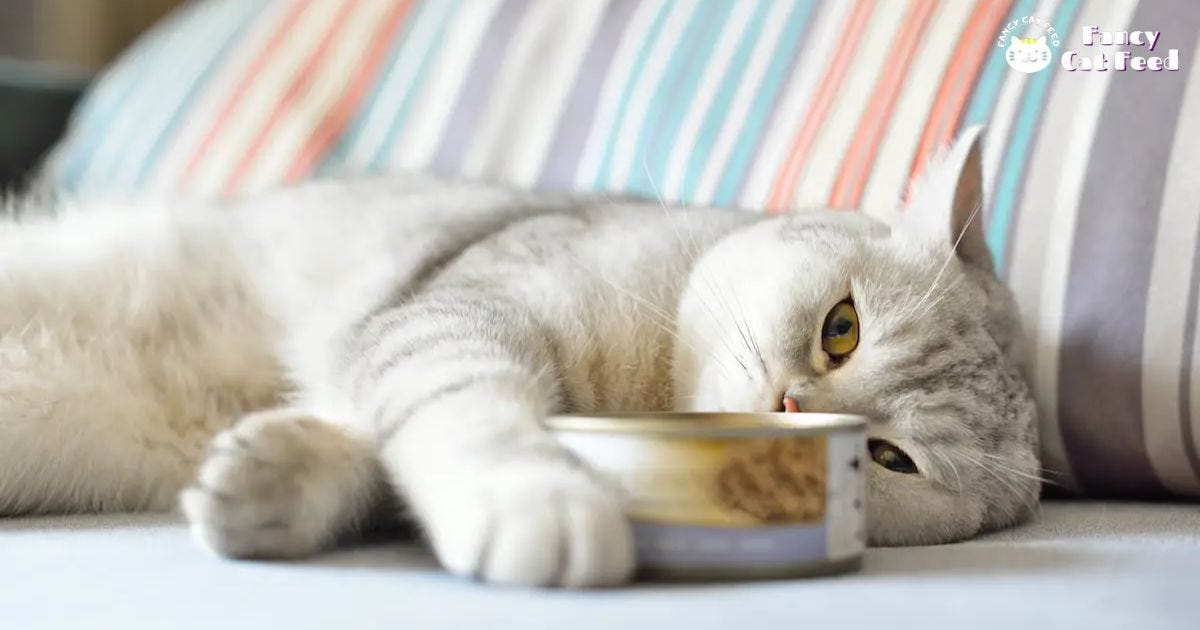
Credit: medium.com
The Shelf Life Of Canned Cat Food
Understanding the shelf life of canned cat food is crucial for pet owners. Keeping your feline friend’s food safe ensures their health and happiness.
Factors Affecting Canned Cat Food Longevity
Several factors impact how long canned cat food stays fresh. These include:
- Storage Conditions: Store cans in a cool, dry place.
- Temperature: Avoid extreme heat or cold.
- Can Integrity: Check for dents or damage.
- Preservatives: Some brands use more preservatives than others.
Unopened Vs Opened Cans
The shelf life differs between unopened and opened cans of cat food. Unopened cans generally last longer.
| Condition | Recommended Duration |
|---|---|
| Unopened Cans | 1-2 years if stored properly |
| Opened Cans | 5-7 days if refrigerated |
Unopened cans can last up to two years. Ensure they are kept in a cool, dry place. Opened cans should be used within a week. Always refrigerate opened cans to maintain freshness.
Risks Of Leaving Cat Food Out
Leaving canned cat food out for too long can be risky. It can lead to health issues for your pet. Two major risks are bacterial growth and pest attraction. Understanding these risks is important for your cat’s health.
Bacterial Growth Concerns
Bacteria can grow rapidly in moist environments. Canned cat food is moist and rich in nutrients. If left out, it becomes a breeding ground for bacteria. Bacteria like Salmonella and E. coli can multiply quickly.
Eating contaminated food can cause your cat to become sick. Symptoms can include vomiting, diarrhea, and lethargy. To prevent this, avoid leaving canned food out for more than 2 hours. Always store unused food in the refrigerator.
Attraction Of Pests
Leaving food out can attract pests like ants and flies. These pests can contaminate the food. Flies can lay eggs on the food, leading to maggots. Ants can also carry bacteria and other pathogens.
To avoid pest problems, clean up any uneaten food immediately. Use sealed containers to store food. This keeps pests away and ensures your cat’s food stays fresh.
| Risk | Description |
|---|---|
| Bacterial Growth | Harmful bacteria can grow, causing illness in your cat. |
| Pest Attraction | Ants and flies can contaminate food, making it unsafe. |
- Store uneaten food in the refrigerator.
- Use sealed containers to keep food fresh.
- Clean up any spills immediately.
Safe Duration For Canned Cat Food Exposure
Understanding the safe duration for canned cat food exposure is crucial for pet owners. Leaving canned cat food out too long can lead to spoilage. This can make your cat sick. This section will provide clear guidelines. It will help keep your furry friend safe and healthy.
General Guidelines
Canned cat food should not sit out for more than 4 hours. After 4 hours, bacteria can start to grow. This can make the food unsafe for your cat.
- Always check the expiration date before serving.
- Store opened cans in the refrigerator.
- Use opened cans within 5-7 days.
Climate Impact On Food Safety
The climate can affect how long canned cat food stays safe. In warmer climates, food can spoil faster.
| Climate | Safe Exposure Time |
|---|---|
| Hot (Above 85°F) | 2 hours |
| Moderate (65°F – 85°F) | 4 hours |
| Cool (Below 65°F) | 5 hours |
Always monitor the temperature in your home. Adjust the exposure time accordingly. This helps ensure your cat’s food stays fresh and safe.
Signs Of Spoiled Cat Food
It’s crucial to know when cat food has gone bad. Spoiled food can harm your cat. Let’s explore the signs of spoiled cat food.
Visual Indicators
Check for mold or discoloration. Fresh cat food should look consistent. If you see green, blue, or white spots, it’s spoiled. Another sign is a change in texture. Fresh food should be smooth and even. Lumpy or slimy textures indicate spoilage.
Changes In Smell Or Texture
Fresh cat food has a mild, meaty smell. If it smells sour or rotten, throw it away. Texture changes also signal spoilage. Fresh food should be moist but not watery. If it feels sticky or mushy, it’s no longer safe.
Proper Storage Practices
Proper storage is key to keeping your cat’s food fresh. Incorrect storage can lead to spoiled food and health issues. This section will guide you on the best practices for storing canned cat food.
Refrigeration Tips
Opened canned cat food should be refrigerated. This prevents bacteria growth and keeps the food fresh. Store the can in the fridge immediately after opening.
- Use the food within 5-7 days.
- Label the can with the date it was opened.
- Keep the fridge temperature at or below 40°F (4°C).
Sealing And Containers
Proper sealing helps maintain freshness. It also prevents odors from spreading. Use airtight containers or covers to seal the food.
- Use plastic lids that fit the can.
- Store food in glass or plastic containers with tight lids.
- Seal any leftover food immediately after feeding your cat.
| Storage Method | Time Food Stays Fresh |
|---|---|
| Refrigerated in original can with lid | 5-7 days |
| Refrigerated in airtight container | 5-7 days |
Storing food properly ensures your cat stays healthy. Always monitor the food for any signs of spoilage.
Transitioning To Fresh Food
Transitioning your cat from canned food to fresh food can be challenging. It involves understanding when to discard old food and how to introduce new portions. This process ensures your cat remains healthy and happy. Here, we will break down the steps to make this transition smooth.
When To Discard Old Food
It’s crucial to know how long canned cat food can sit out. Leaving it out for too long can cause health issues for your cat. Here are the safe time frames:
| Temperature | Max Time |
|---|---|
| Room Temperature (below 70°F) | 4 hours |
| Warm Temperature (above 70°F) | 2 hours |
Always check the food before serving. If it smells bad or looks different, throw it away. Clean the food bowl after each meal to avoid bacteria build-up.
Introducing New Portions
Start with small portions of fresh food. Mix it with canned food to make the transition easier. Gradually increase the amount of fresh food over a week. Here’s a simple plan:
- Day 1-2: 75% canned food, 25% fresh food
- Day 3-4: 50% canned food, 50% fresh food
- Day 5-6: 25% canned food, 75% fresh food
- Day 7: 100% fresh food
Observe your cat during this period. Look for any signs of digestive issues or allergies. If your cat refuses the new food, slow down the transition process. Patience is key to a successful switch to fresh food.
Use fresh, high-quality ingredients. Ensure the food is balanced and meets your cat’s nutritional needs. Consult with your vet if you have any concerns.
The Role Of Preservatives
Canned cat food often contains preservatives. These preservatives extend the food’s shelf life and maintain its freshness. Understanding the role of preservatives is essential for every cat owner. It helps in making informed decisions about your pet’s diet.
Natural Vs Artificial Preservatives
Preservatives in canned cat food can be natural or artificial. Natural preservatives include ingredients like vitamin E and rosemary extract. These are safer for your cat’s health. Artificial preservatives like BHA and BHT are synthetic. They may pose health risks over time.
| Natural Preservatives | Artificial Preservatives |
|---|---|
| Vitamin E | BHA |
| Rosemary Extract | BHT |
How Preservatives Affect Longevity
Preservatives impact how long canned cat food can sit out. Natural preservatives usually offer a shorter shelf life compared to artificial ones. Foods with natural preservatives may spoil faster.
- Natural preservatives: Shorter shelf life
- Artificial preservatives: Longer shelf life
Understanding these differences helps you manage your cat’s food better. Always check the label for the type of preservatives used. Opt for natural options when possible to ensure better health for your cat.
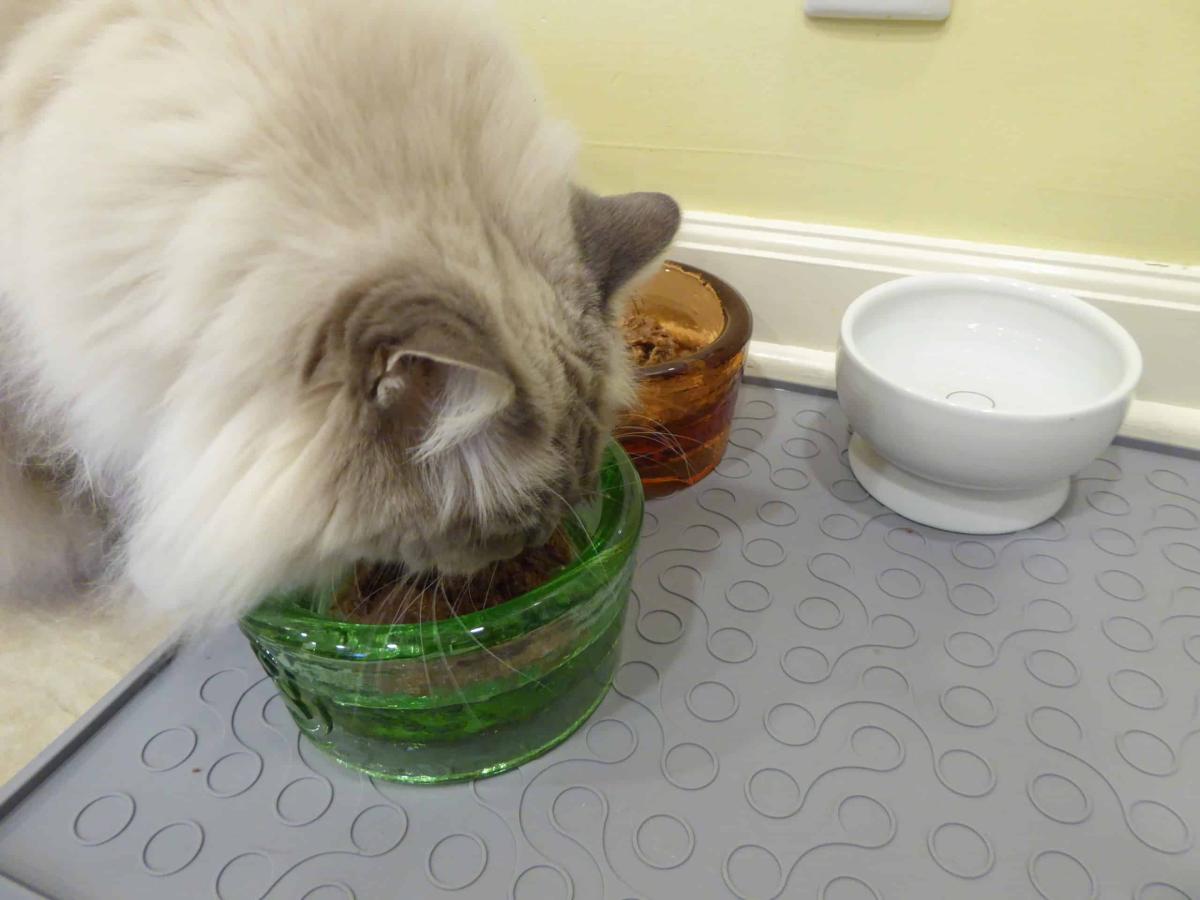
Credit: puainta.com
Health Implications For Cats
Canned cat food left out too long can harm your cat’s health. Understanding the risks helps keep your feline friend safe.
Short-term Effects Of Spoiled Food
Spoiled food can cause immediate health issues for cats. Bacteria grow quickly in warm, moist environments. Canned food left out for more than 4 hours can become dangerous.
- Vomiting: Cats may vomit after eating spoiled food.
- Diarrhea: Spoiled food can cause diarrhea, leading to dehydration.
- Loss of Appetite: Cats may refuse to eat if they sense the food is bad.
| Symptom | Possible Cause |
|---|---|
| Vomiting | Bacterial contamination |
| Diarrhea | Food spoilage |
| Loss of Appetite | Spoiled taste |
Long-term Health Concerns
Repeated exposure to spoiled food can lead to long-term health problems. Chronic exposure to bacteria and toxins can weaken a cat’s immune system.
- Digestive Issues: Long-term spoiled food can cause chronic digestive problems.
- Nutritional Deficiencies: Spoiled food loses nutrients, leading to deficiencies.
- Infections: Continuous exposure to bacteria increases the risk of infections.
Keeping food fresh ensures your cat stays healthy and happy.
Canned Vs Dry Cat Food
Choosing between canned and dry cat food can be tricky for pet owners. Each type has its benefits and drawbacks. Understanding these can help you make the best choice for your furry friend.
Shelf Stability Differences
Canned cat food has a shorter shelf life than dry food. Once opened, canned food should not sit out for more than 4 hours. This prevents bacterial growth and keeps your cat safe.
Dry cat food, on the other hand, can sit out much longer. You can leave dry food out for up to 48 hours. Its low moisture content helps it stay fresh.
Storage:
| Type of Food | Unopened Shelf Life | Opened Shelf Life |
|---|---|---|
| Canned Food | 1-2 years | 4 hours |
| Dry Food | 1 year | 48 hours |
Choosing The Right Food For Your Pet
When selecting cat food, consider your pet’s needs and preferences. Canned food is often more palatable and hydrating. This is ideal for cats who need more water.
Dry food is convenient and can help keep teeth clean. It is also easier to store and can be left out longer.
Factors to Consider:
- Your cat’s age
- Health conditions
- Activity level
- Personal preferences
Each cat is unique. Testing both types of food can help you decide.
Understanding Cat Feeding Behavior
Understanding your cat’s feeding behavior can help maintain its health. Cats are creatures of habit and have unique eating patterns. Knowing these patterns helps in keeping their food fresh and safe.
Feeding Patterns
Cats often prefer several small meals throughout the day. Unlike dogs, they don’t usually eat all their food at once. Instead, they nibble on their food, which can lead to leftovers sitting out for hours.
Leaving canned cat food out for too long can be unsafe. Food can spoil, leading to health issues for your cat. Knowing your cat’s feeding patterns can help you manage this effectively.
Adapting To Your Cat’s Eating Habits
Adapting to your cat’s eating habits ensures they get fresh food. If your cat eats small amounts at a time, consider serving smaller portions more frequently. This prevents the food from sitting out too long.
Monitor your cat’s behavior to determine the best feeding schedule. If they eat at specific times, serve food accordingly. This reduces the risk of spoilage and keeps your cat healthy.
Use an automatic feeder for a consistent feeding routine. This can help in managing portions and keeping food fresh.
Automated Feeders And Food Safety
Automated feeders are a blessing for pet owners. They help in maintaining regular feeding schedules. But how safe are they for canned cat food? Let’s explore the safety aspects.
Using Technology To Manage Feeding
Automated feeders use timers to dispense food. This ensures your cat gets fed on time. These feeders can be set to release food multiple times a day. This is helpful for busy pet owners.
Some feeders come with cooling systems. These help keep canned food fresh. This reduces the risk of spoilage. Fresh food is crucial for your cat’s health.
| Feature | Benefit |
|---|---|
| Timers | Regular feeding schedules |
| Cooling Systems | Keeps food fresh |
| Multiple Dispensing | Feeds multiple times a day |
Limitations And Considerations
Not all feeders have cooling systems. This can be a problem in hot weather. Canned food can spoil quickly without cooling. Always check the feeder’s features before buying.
Automated feeders need regular cleaning. Dirty feeders can harbor bacteria. This can make your cat sick. Clean the feeder at least once a week.
- Check for cooling features
- Clean feeder regularly
- Monitor food freshness
Some feeders may malfunction. Always have a backup plan. This ensures your cat does not miss a meal.
- Test the feeder regularly
- Keep extra food handy
- Monitor feeding times
Automated feeders are useful but need proper care. Ensure you choose the right feeder for your cat’s needs.
Emergency Situations: Power Outages And Food Safety
Power outages can catch us off guard. They bring unique challenges, especially for pet owners. Keeping your cat’s food safe during these times is crucial. Proper preparation can prevent spoilage and keep your cat healthy.
Maintaining Food Safety During Power Loss
Power loss can impact the safety of your cat’s food. Without refrigeration, canned food can spoil quickly. Bacteria growth increases as food warms.
Follow these steps to maintain food safety:
- Keep the refrigerator and freezer doors closed.
- Use a thermometer to check food temperatures.
- Discard any food above 40°F for over two hours.
Knowing how long food has been out is crucial. Mark the time when the power goes out. This will help you track food safety.
Preparation And Contingency Plans
Preparation is key to managing power outages. Have a plan to ensure your cat’s food stays safe.
Consider these steps:
- Stock up on shelf-stable cat food.
- Keep a cooler and ice packs ready.
- Have a manual can opener on hand.
Table for quick reference:
| Item | Action |
|---|---|
| Shelf-stable cat food | Stock up |
| Cooler and ice packs | Keep ready |
| Manual can opener | Have on hand |
Always have a backup plan. Identify a nearby friend or family member with power. They can help store your cat’s food safely.
Traveling With Canned Cat Food
Traveling with your feline friend requires extra preparation. One crucial aspect is managing their diet. Canned cat food is a popular choice for many pet owners. Yet, knowing how to keep it safe during travel is vital.
Keeping Food Safe On The Go
Maintaining the freshness of canned cat food on the go is essential. Here are some tips:
- Always carry a cooler bag.
- Use ice packs to keep the food cold.
- Store opened cans in airtight containers.
Remember, opened canned cat food should not sit out for more than two hours. Keeping it cool helps preserve its quality and prevents spoilage.
Portable Storage Solutions
Using the right storage solutions makes traveling with cat food easier. Here are some ideas:
| Storage Solution | Benefits |
|---|---|
| Cooler Bags | Maintain temperature, easy to carry |
| Ice Packs | Keep food cold for hours |
| Airtight Containers | Prevent contamination and odor |
These storage solutions help keep your cat’s food fresh and safe. Plan ahead to ensure your pet stays healthy during your travels.
Innovations In Cat Food Packaging
Cat food packaging has seen significant advancements. These innovations ensure our cats get fresh, safe meals. Modern packaging methods also help reduce waste and improve shelf life.
Advances In Preserving Freshness
New packaging technologies keep cat food fresh longer. Vacuum sealing removes air, preventing spoilage. Oxygen absorbers are also used to extend freshness. These methods lock in nutrients and flavors.
Some brands use resealable pouches. This allows for easy storage and keeps food fresh between servings. Another method is using special liners inside cans. These liners prevent reactions between the food and metal.
| Packaging Type | Benefit |
|---|---|
| Vacuum Sealing | Removes air, prevents spoilage |
| Oxygen Absorbers | Extends freshness |
| Resealable Pouches | Easy storage, maintains freshness |
| Special Can Liners | Prevents food-metal reactions |
Impact On Food Safety
Innovative packaging also impacts food safety. New materials and designs reduce contamination risk. Sealed packaging keeps out bacteria and pests. This ensures the food stays safe for your cat.
Some packaging now includes smart indicators. These show if the food has been exposed to harmful conditions. These indicators change color if the food gets too warm or cold.
Brands are also using BPA-free materials. BPA can harm pets, so avoiding it is crucial. This makes the packaging safer for long-term use.
- Sealed packaging keeps out bacteria and pests.
- Smart indicators show harmful exposure.
- BPA-free materials ensure safety.
Educating Cat Owners
Understanding how long canned cat food can sit out is vital. It ensures your pet’s health and happiness. Many cat owners unknowingly leave food out too long, risking spoilage and illness.
Importance Of Awareness
Awareness about the proper handling of canned cat food can prevent many issues. Spoiled food can lead to digestive problems and other health risks. Knowledge about food safety helps in maintaining your cat’s overall well-being.
Resources For Best Practices
Here are some resources to help you manage canned cat food effectively:
- Pet Health Websites: Websites like ASPCA offer guidelines on food safety.
- Veterinarian Advice: Your vet can provide tailored advice for your pet.
- Product Labels: Always read the manufacturer’s guidelines on the can.
| Resource | Details |
|---|---|
| Pet Health Websites | Provide general food safety guidelines. |
| Veterinarian Advice | Offers personalized and expert recommendations. |
| Product Labels | Include specific storage and usage instructions. |
By utilizing these resources, you can ensure your cat’s food stays fresh and safe. Always prioritize your cat’s health by staying informed and vigilant.

Credit: www.prettylitter.com
Frequently Asked Questions
How Long Can Wet Cat Food Be Unrefrigerated?
Wet cat food should be unrefrigerated for no longer than 2 hours. After that, bacteria can grow quickly.
How Quickly Does Wet Cat Food Spoil?
Wet cat food spoils within 4 hours at room temperature. Store uneaten portions in the fridge for up to 3 days.
How Long Can Canned Pet Food Be Left Out?
Canned pet food should be left out for no more than 4 hours. After that, it can spoil. Store uneaten food in the fridge.
Is It Okay To Leave Cat Food Out All Day?
Leaving dry cat food out all day is generally safe. Wet food should be removed after two hours to prevent spoilage.
Conclusion
Leaving canned cat food out too long can harm your pet. Always follow guidelines for safe storage. Fresh food ensures your cat stays healthy and happy. Remember to refrigerate leftovers promptly. By doing so, you prevent spoilage and potential health risks.
Proper handling of cat food guarantees your feline friend’s well-being.

